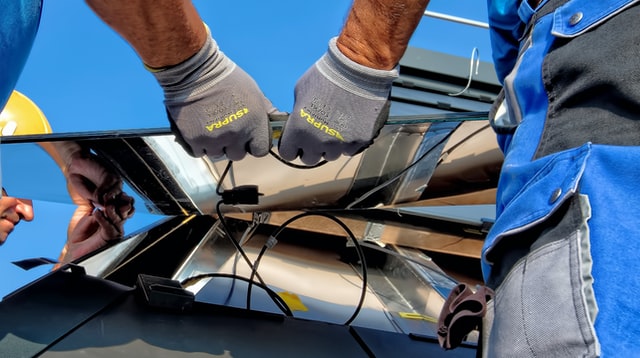The components you need for an offgrid PV system include solar panels, battery storage, a charge controller, and connections to the grid. The systems can reduce your electrical bill while keeping you connected. For more information, contact a professional who has experience in designing and installing off-grid solar systems. For more information, check out this off-grid PV system guide. This article will go over the most important components of an off-grid PV system.
An off-grid solar system consists of four basic components: a solar panel, a photovoltaic battery bank, and an inverter. Typical off-grid systems consist of photovoltaic cells which absorb sunlight and convert it to DC electricity. These components are connected to a charge controller, which controls the amount of current going to the battery bank to prevent overcharging or reducing the system’s output.
The solar sun hours should be related to the region you live in. In Central Europe, solar radiation is two to four hours in winter, six to eight hours in summer. The solar exposure for a city is much higher than that of a mountain hut. The inverter should be 25 to 30 percent larger than its smaller counterpart. A solar panel with more solar radiation will need to be bigger than its monocrystalline counterpart.
In addition to battery bank, off-grid PV systems should also use a charge controller. The charger is a key component of an off-grid PV system, and must be able to control the DC/AC site. The inverter is the power source, while the charge controller controls the DC/DC voltage. Deep cycle batteries are essential for a PV off-grid package. Deep cycle batteries have thicker plates and are designed for constant deep discharging. They are more expensive than car batteries, but are far more reliable, Or you could go with the latest range of batteries – Lithium Ion Batteries.
Off-grid PV systems must include a solar charge controller. The charge controller regulates the flow of power from the solar panels to the battery bank. It prevents overcharging and boiling of the battery electrolyte. Over-discharge protection is a safety feature that stops the battery from damaging itself during a critical voltage state. Another optional feature is deep discharge protection, which helps prevent batteries from being damaged.
Other components required for an off-grid PV system include a battery. While they’re optional for a grid-tied PV system, they are essential for stand-alone systems. These batteries store the solar-produced electricity during the day and provide power for your home at night. They can be 12V, 24V, 48V, or even higher. Charge controllers should also be installed in the stand-alone system for safety purposes.
The size of your off-grid PV system will vary, but the average size for a five-kilowatt (kW) system is between twenty and fifty hundred-watt solar panels. The exact number of panels you need depends on your usage requirements, amount of sunlight available, and the usable ground space. In the US, a five-kilowatt system would require a total of fifty or sixty 100-watt solar panels.
An off-grid PV system also includes an inverter. The inverter converts DC power to AC power and sends it to loads. Inverters are generally battery-based and can accommodate small or large loads. You’ll need an inverter that can handle multiple loads at once. It’s important to know which components of an off-grid PV system are most important. You may be surprised at how much you can save by using a small off-grid solar system.
You can buy an off-grid PV system for as little as five hundred dollars, or a few thousand for a more sophisticated system. For a basic, portable system, a few hundred watts of solar panels and a 3,000-watt inverter will do the trick. Adding a large battery bank will require a professional installer. The components for an off-grid PV system can range anywhere from several hundred to several thousand dollars.

